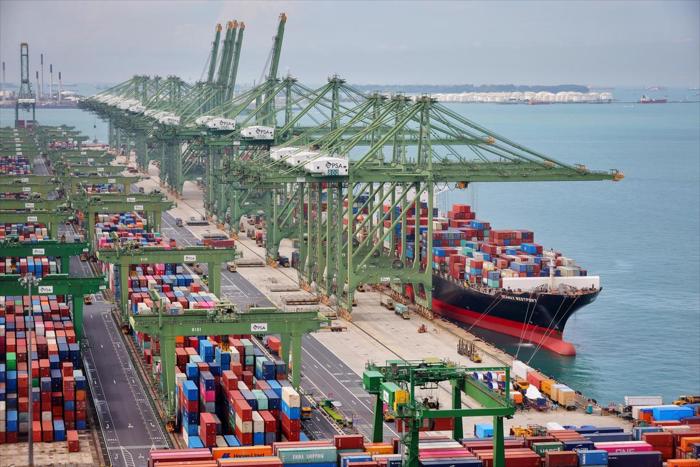Rotterdam/Singapore 'green shipping corridor' collaboration a success
The Singapore-Rotterdam partnership has seen the first indications that its Green and Digital Shipping Corridor (GDSC) is coming to fruition, with shared bunkering procedures for methanol and bio-methane, and inter-port standardisation for port calls and electronic bills of lading (eBLs).
The two ports collaborate on matters of safety, such as bunkering procedures for new marine fuels, as well as in the digital aspect, adopting shared standards for eBLs and port call optimisation.
Recently at Rotterdam, Shell supplied 100 tonnes of mass-balanced liquefied bio-methane to CMA CGM Tivoli. The move illustrates the possibility of bunkering the now inordinately LNG-fuelled newbuild fleet with a cleaner, but chemically identical, form of LNG, derived from waste-based feedstocks.
Bio-methane, also known as bio-LNG, is generated using methane given off by landfill, sewage, and agricultural slurry, which is able to be harnessed as ship fuel. While bio-methane cannot deliver a 100% CO2 emissions reduction, as a fuel derived from anthropogenic sources of waste, it can help offset oil and gas extraction by harnessing a source of methane which existed at any rate.
The GDSC was established in 2022, when ‘green corridors’ were a relatively new concept. Since then, some 62 have been established.
“We have brought together 28 partners from across the whole value chain of shipping between Singapore and Rotterdam,” a port of Rotterdam spokesperson told. “It’s about defining the standards we can all follow to replace fossil fuels with sustainable fuels.
“These two ports are the number-one and -two bunkering ports in the world, so it’s logical they work together to find solutions.”
Without standardised definitions, ports have little prospect of performing the necessary data exchange and inter-port communication required to enable just-in-time arrival. For example, ports disagree on what is defined as ‘arrival’. This has spurred IMO action in respect of a Maritime Single Window (MSW), which would standardise these definitions.
“We also want to make shipping more efficient, that’s the digital part of it,” the spokesperson added. “So, for instance, when a ship knows exactly when it can make a port call, it can sail as efficiently as possible, reducing the use of fuel.”
One organisation tasked with defining these standards is the Digital Container Shipping Association (DCSA), the same entity that is standardising eBLs, which serve as another component of the GDSC.
Meanwhile, in February, Brazil signed a green corridors agreement with Norway, a trading partner for aluminium oxide, fish, fertilisers, and animal feed. Both countries benefit from sufficient hydro-electric generation to power the majority of their grids.
“We seek to build a sector that combines economic development and environmental responsibility, positioning Brazil as a reference on the global stage,” said Brazil’s minister of ports and airports, Silvio Costa Filho.
But of those 62 green corridors, just six have reached what the Global Maritime Forum describes as a ‘pre-commercial’ phase of development. On the other hand, initiatives such as the Nordic Roadmap, US-Republic of Korea corridors, and the Decatrip project are on hold, Global Maritime Forum notes in its 2024 annual progress report on green shipping corridors.

